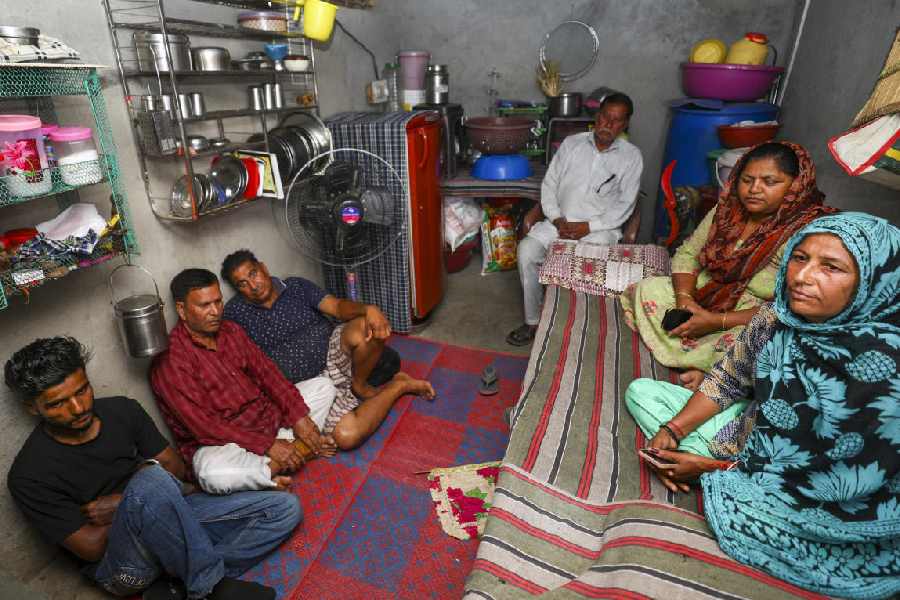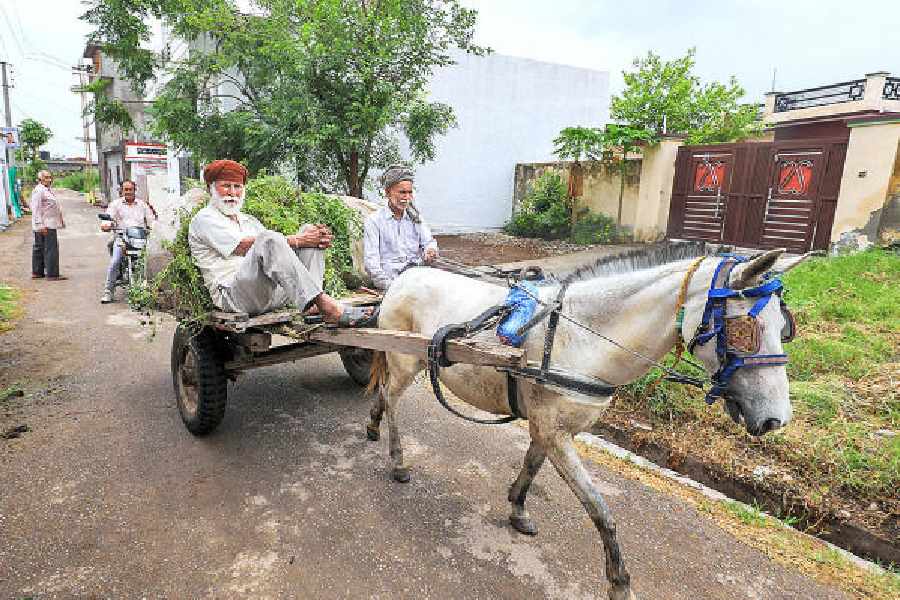 |
Patna, April 26: Good old India has grown — literally — but Bihar has shrunk.
Over 5,000sqkm of wasteland across the country has been converted into “net” usable terrain between 2005 and 2008, according to the Wasteland Atlas of India that was released on Wednesday.
The big battles against barren land have been fought in states like Rajasthan, Manipur, Andhra Pradesh and Karnataka (See chart).
But wasteland area in Bihar has grown by 2,760sqkm (2,75,900 hectares), or nine times the size of Patna city, over the three-year period ending in 2009, according to the satellite-based surveillance data released by the Union rural development ministry.
The country has lost 27,000sqkm of usable land in this period, says the Atlas brought out by the department of land resource under the ministry and the National Remote Sensing Centre (NRSC).
In other words, a “net gain” of over 5,000sqkm, as rural development minister Jairam Ramesh put it.
Besides Bihar, Arunachal Pradesh also figures among the states that witnessed a high rate of conversion of non-wasteland to wasteland.
“The main reasons for the decrease in wasteland are conversion of wasteland into cropland, forest, plantation, water bodies and industries. The changes have been witnessed in 42,886 locations in various states,” NRSC director V.K. Dadhwal said.
The 32,000sqkm of converted wasteland include 13,401sqkm of cropland, followed by 7,675sqkm of forests, 1,885sqkm of plantations, water bodies (over 1,267sqkm) and industrial establishments (137sqkm).
The conversion of wasteland for industrial use has mainly taken place in Karnataka (2,965 hectares), Gujarat (2,390 hectares), Rajasthan (1,638 hectares), Tamil Nadu (1,537 hectares) and Haryana (1,011 hectares).
However, Arunachal Pradesh and Bihar have witnessed conversion of non-wasteland into wasteland because of various reasons like shifting cultivation and sediments left behind by floods.
“Shifting cultivation is a practice in Arunachal Pradesh. People burn scrubs and trees to make the land fit for agriculture. But after some years, these lands become barren and (turn into) wasteland. There has been an increase in wasteland in Bihar because of sediments left by floods in the Kosi,” Dadhwal said.
The Atlas suggests that the largest growth of land rendered barren or unusable for cultivation in Bihar has occurred in Samastipur, Patna, and Bhagalpur districts, mainly through the movement of river sediments turning land marshy or waterlogged.
The Atlas, based on observations through India’s remote sensing satellites, has shown that Samastipur added 552sqkm, nearly twice Patna’s area, of waterlogged or marshy land, a consequence of seasonal river flows.
The amount of waterlogged or marshy land in Patna district in 2009 grew dramatically to 418sqkm, from less than five sqkm in 2006, according to the Atlas. The observations suggest that most of the wasteland added by Bihar is linked to floods, with only tiny contributions from other sources such as forest degradation, the ingress of riverine sands or the emergence of industrial and mining wastelands.
In Patna district, for example, 1.79sqkm of mining wasteland has emerged over the three years. Degraded forest has added five sqkm wasteland in Munger and 23sqkm in Jamui.
Agriculture experts said the conversion figure was substantial as the population pressure is already very high on 56 lakh hectares of arable land in the state. According to official records, 4.36 lakh hectares of this arable land is barren land.
A top official in the agriculture department, who spoke on condition of anonymity, said the Kosi deluge of 2008 had rendered a huge chunk of fertile land infertile owing to sand deposition.
The official explained that during the breach in the Kosi embankment, the river water brought with it huge volumes of sand, coarse materials and silt. While the heavier parts were dumped in the nearby areas, the lighter part was deposited at a distance in the form of silt. Hence, the land falling in areas located near the embankment witnessed sand casting whereas those located far off got the benefit of fertile silt.
The official said the land that has become barren is mainly located in parts of north Bihar falling under the catchment areas of the Kosi and Gandak rivers. “Soil of such land has become saline because of the high water table, which adversely affects land fertility. The Kosi deluge suddenly added a huge chunk of land in the barren category due to deposition of sand and other coarse material,” he added.
The state government, however, is not satisfied with the Atlas findings and has launched an ambitious project which entails detailed data of land use pattern in Bihar.
“The Bihar council of science and technology has been given the task of collecting detailed information gathered through satellite imaging on a regular basis. It has also been asked to verify the data collected by sending teams to spot. Based on cross-verification, a data bank would be created and even the methodology being used in this work would get validated over a period of time,” agriculture department expert Anil Jha said.
Jha said a lot had changed since the 2008 deluge. “The general perception that no agricultural activity is taking place in areas which witnessed sand deposition is not correct. Many local farmers have started cultivating things which can be cultivated in the given situation,” he said.
Agriculture Research Institute, Patna, scientist Ajay Kumar, who has done extensive surveys in the Kosi region, echoed Jha. “During field studies in Madhepura, Supaul and Saharsa districts, I found that after the Kosi deluge, farmers of the region, for whom paddy and wheat used to be the main crops, have started cultivating 40 new kinds of crops like watermelon, pointed gourd and cucumber. So anyone terming this sandy land barren is not presenting the ground reality correctly,” Kumar said.
The government has selected around 25,000 hectares of land in the Kosi region for seed cultivation of Sesbania, a kind of green grass which after growth is again ploughed with the soil, adding to its fertility. Its cultivation is done between the Kharif and Rabi cropping season and it has a gestation period of just 50 to 60 days.
Dinesh Mishra, a technocrat who has worked extensively on the Bihar floods, is, however, not too impressed with what is being done.
“There is a need to adopt a holistic approach if the government is really interested in addressing the wasteland issue. Apart from suggesting means for reclaiming wasteland, the government would also have to address the causes which result in addition to the wasteland,” Mishra said.
Additional reporting by Basant Kumar Mohanty and GS Mudur










